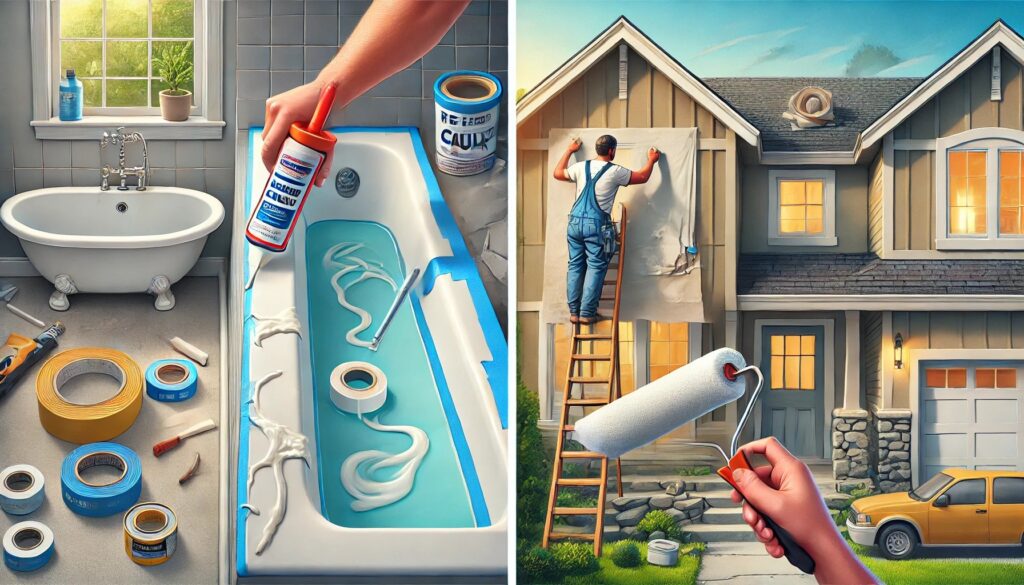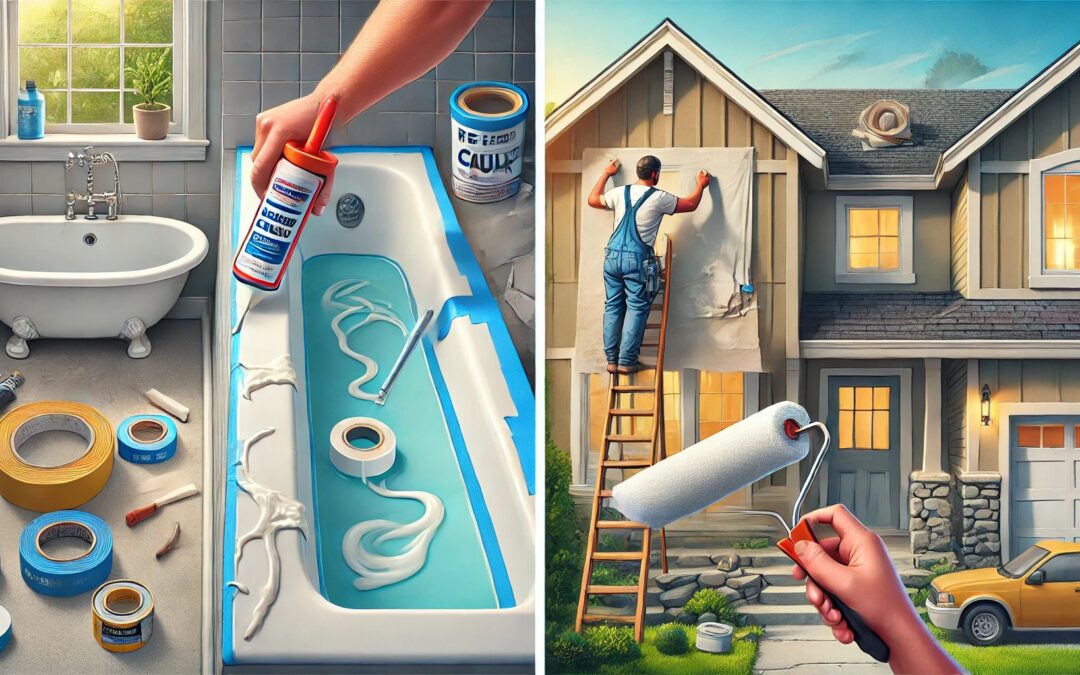Re-caulk Your Bathroom Like a Pro
 Keeping your bathroom in top shape is crucial for its appearance and function. Old caulk can crack, peel, and harbor mold, leading to potential water damage. Here’s a step-by-step guide to re-caulking your bathroom for a fresh and secure seal.
Keeping your bathroom in top shape is crucial for its appearance and function. Old caulk can crack, peel, and harbor mold, leading to potential water damage. Here’s a step-by-step guide to re-caulking your bathroom for a fresh and secure seal.
- Remove the Old Caulk: Start by carefully cutting and peeling away the old caulk using a caulk removal tool or a utility knife. Clean the area thoroughly with a mold-killing solution or bleach and water mixture to eliminate mold and residue. Let the area dry completely to ensure the new caulk adheres properly.
- Prep with Painter’s Tape: Apply painter’s tape along the edges where you’ll be caulking. This helps create straight, clean lines and keeps the caulk from spreading onto unwanted areas.
- Apply the New Caulk: Use silicone-based caulk for its durability and resistance to mold. Cut the caulk tube’s tip at a 45-degree angle. With a caulking gun, smoothly and evenly apply the caulk along the seams. Use a caulking tool or a soapy finger to smooth it, and press the caulk into the joint.
- Remove the Tape: Carefully remove the painter’s tape before the caulk starts to dry to maintain those crisp, clean lines.
- Let It Cure: Follow the manufacturer’s drying instructions. Typically, you’ll need to let the caulk cure for about 24 hours before the shower or bath.
Enhance Your Home’s Curb Appeal with a Fresh Coat of Paint
A fresh exterior paint job not only makes your home look great but also protects it from the elements. Whether you’re a DIY enthusiast or prefer to hire a professional, here are some tips to get the job done right.
DIY Painting Tips
- Inspection and Cleaning: Check for cracks, rot, or mold and address these issues before painting. Power wash the surfaces to remove dirt and old paint, ensuring a smooth base for the new paint.
- Selecting Paint: Choose high-quality exterior paint suited to your climate. A satin finish is a good choice for hiding imperfections and is easy to clean.
- Application Technique: Apply a primer if changing colors drastically or painting over bare wood. Paint from top to bottom with controlled, overlapping strokes to avoid streaks.
Hiring a Professional
- Research and Reviews: Choose vendors with excellent reputations and positive reviews.
- Detailed Estimates: Obtain quotes from at least three contractors, including costs for materials, labor, and the number of coats.
- Verify Credentials: Ensure your contractor is licensed and insured to protect against any mishaps.
With these tips, you can ensure a professional finish, whether tackling the project yourself or hiring an expert.

